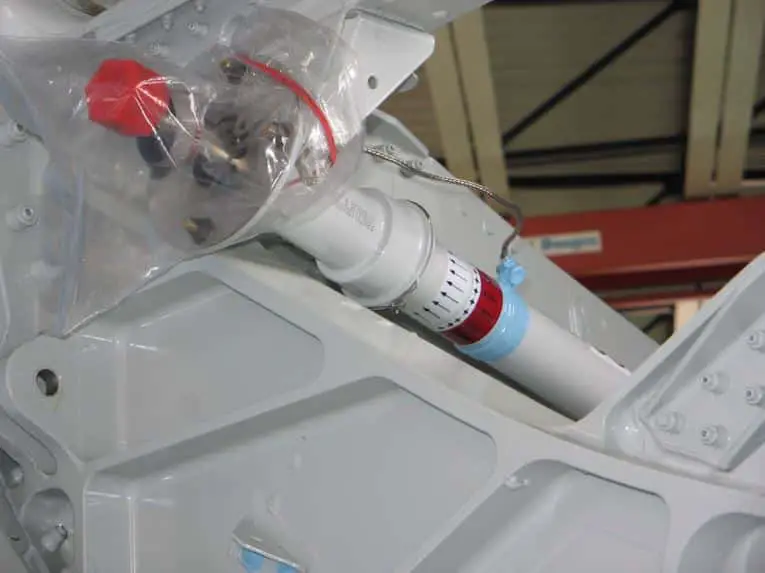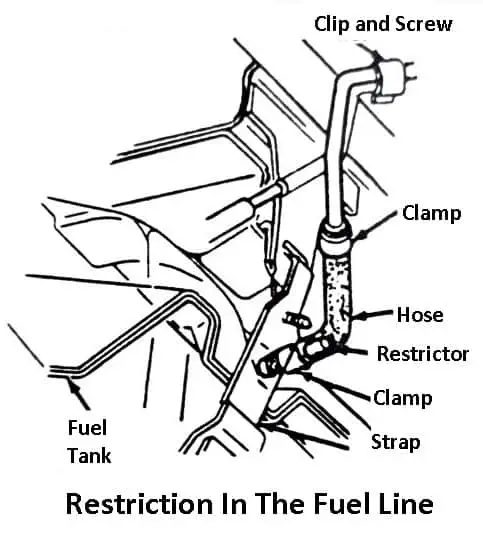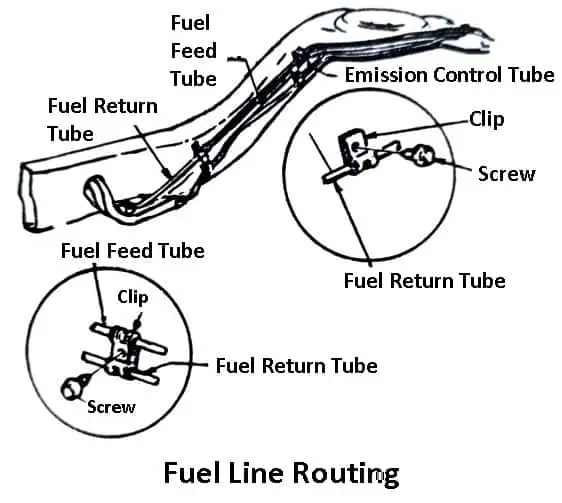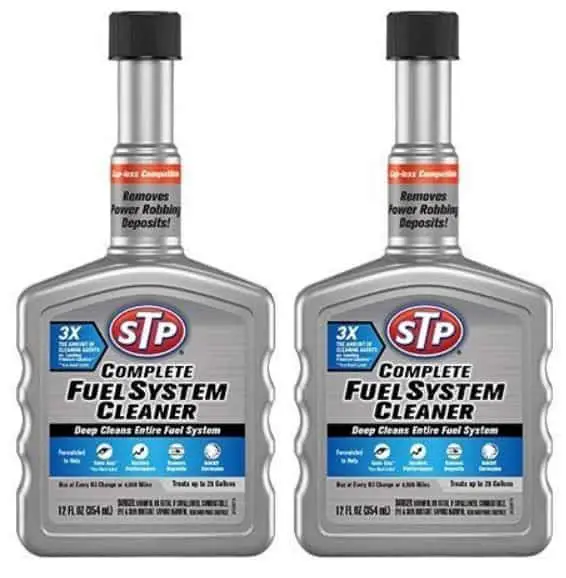
Fuel Line: Diagram, Types, Functions, Material, Fitting and Cleaner
Content
In this article, you will learn what is a fuel line? Its scheme, types, function, material, installation and purifier are explained through images .
Если вам нужен PDF file ? Just download it at the end of the article.
What is a fuel line?
A fuel line is known as a hose or pipe that is used to transfer fuel from one point to another or from a storage tank to a vehicle. . The fuel line is usually made of reinforced rubber to prevent tearing and kinking.
Sometimes it is also made of plastic materials, although they are located in the chassis of the car, but they are in a weak position. They are installed in locations exposed to the elements, road conditions or heat. In addition, it cannot be damaged due to a moving engine.
The U.S. Environmental Protection Agency defines a fuel line as "all types of hoses or pipes designed to carry liquid fuels or fuel vapors. This means that it must also include all hoses or tubes for fillers, for connections between dual fuel tanks, and for connecting the carbon filter to the fuel tank. It has no blow-by hoses or pipes to the engine intake or any other hoses or pipes that are open to the atmosphere."
Fuel pipeline construction
All parts of the fuel system are connected by fuel and steam lines and hoses. They allow fuel to be fed into the carburetor, excess fuel returned to the tank, and fuel vapors vented.
The fuel lines must be routed so that they remain as cool as possible. If any part of the fuel line is exposed to overheating, the gasoline passing through it evaporates faster than the fuel pump can create suction.
Low pressure or partial vacuum at the fuel pump will also cause fuel to evaporate. This condition creates a vapor lock, due to which the fuel pump only supplies vapor to the carburetor. In addition, steam escapes from the vent without supplying gasoline to the engine.
Fuel line operation

The vapor return line usually runs from the fuel pump or fuel filter to the fuel tank. This vapor return line is connected to a special outlet in the fuel pump. Any vapor that is generated in the fuel pump is returned to the fuel tank through this line.
The vapor return line also allows excess fuel pumped by the fuel pump to return to the tank. This excess fuel, due to the constant circulation, helps to cool the fuel pump.
Some vapor return lines have a built-in check valve that prevents fuel from being fed back to the carburetor from the fuel tank through the vapor return line. During normal operation, vapor pressure from the fuel pump displaces the check ball and allows fuel vapor to flow into the fuel tank.
If, however, fuel tries to return to the carburetor, fuel pressure causes the control ball to seat, blocking the line. In some fuel systems, a vapor separator is connected between the fuel pump and the carburetor.
It also has a separator consisting of a sealed tank, a strainer, inlet and outlet pipes, and a metering or outlet port that connects to the fuel tank.
Vapor bubbles entering the separator along with the fuel rise up into the vapor separator. The steam, under pressure from the fuel pump, is then directed through the exhaust pipe to the fuel tank, where it condenses into a liquid.
Fuel line types
- hard lines
- fixed lines
#1 Hard lines

Most fuel lines attached to the body, frame, or engine are seamless steel pipes. Steel springs also wound the tube at certain points to protect it from damage. When replacing the fuel line, use only steel pipes.
Copper and aluminum pipes should not be replaced by steel pipes. These materials do not withstand normal vehicle vibrations and also react chemically with gasoline.
In some vehicles, rigid fuel lines are attached to the frame from the tank to a point close to the fuel pump. The gap between the frame and the pump is then bridged with a short flexible hose that absorbs engine vibrations. In other vehicles, a hard line runs directly from the tank to the pump.
#2 Flexible lines

Synthetic hoses are used in most fuel systems where flexibility is required. Connections between steel fuel lines and other system components are often made in short lengths.
The internal diameter of the fuel supply hose is usually larger (8 to 10 mm) and that of the fuel return hose is smaller (6 mm). Steam line materials must be resistant to fuel vapors.
A metal or plastic restrictor is mainly used in vent lines to control the steam flow rate. They are located either at the end of the ventilation pipe or in the steam hose itself. When used in a hose instead of a vent pipe, the restrictor must be removed from the old hose and replaced with a new one each time the hose is replaced.
Fuel Line Materials
Typically, the fuel line hose is made from several materials, as listed below:
- Steel fuel hose
- Rubber fuel hose
- Copper fuel line hose
- Plastic fuel line hose
#1 Steel fuel line hose
Many FWD and LWD vehicles with fuel tanks have rigid fuel lines that run the entire length of the chassis from the tank to the engine bay. These pipes are cheap and durable, but can leak fuel.
#2 Rubber
While some cars have a rubber fuel hose connecting the fuel pipe on the chassis to the fuel pump or carburetor on the engine. Rubber hoses are flexible and can be cut to length, but they wear out over time and can become chafed if not secured properly.
#3 Copper
In older models, the fuel line hose is equipped with copper material. The advantage of using copper hoses is that they are easy to install and repair, but are bulky and expensive compared to other materials.
#4 Plastic
Modern vehicles typically use fuel lines made of plastic, usually nylon. Plastic fuel lines do not rust and are lighter than metal ones, but melt at low temperatures and cannot be repaired.
Installation and installation of the fuel line
Installation

The fuel lines from the tank to the carburetor are rounded to follow the frame along the bottom of the vehicle.
The steam and return lines usually run on the frame spar opposite the supply line, but may also be run along with the fuel supply lines. All rigid ones are attached to the frame or underbody with screws. и clamps or clips. Clamps are typically used to secure hoses to steel fuel lines.
Fitting

Brass fittings are used in either flare or compression type fuel lines. Flared fittings are more common. Double expansion should be used during tubing replacement to prevent flare from flare and ensure a good seal.
The compression fitting has a single sleeve, tapered sleeve, or half sleeve nut to ensure a secure connection. Various types of clamps are used to fasten fuel hoses.
Fuel line cleaner

In every type of vehicle, the fuel system plays the most important role in delivering fuel to the engine. A car cannot run without fuel, so your car's fuel system must always be kept in top condition to keep it running efficiently.
Fuel System Cleaner is a product that helps clean the entire fuel system of dirty particles that can directly affect vehicle performance and engine health. As a general rule, no one wants an engine damaged or broken due to intermittent fuel delivery or shutdown at a critical moment.
Without a fuel system cleaner, your vehicle may experience some symptoms. Carbon buildup is a symptom caused by a bad fuel line, but it takes time to get worse. If this happens, it can completely destroy the system. Therefore, it is good to use a fuel line cleaner in the fuel system so that it can prevent carbon contaminants from building up in your fuel system.
Conclusions
Fuel lines are a safety component in every vehicle, so they must comply with safety regulations. When selecting reliable fuel lines, the driver must take into account several considerations and carry out a minimum of component-level inspection.
The main points to consider when choosing a fuel line are material, clearance study, motor shaft movement, connector/end fitting selection.
So, for now, I hope I've covered everything you were looking for about "Fuel line" . If you have any doubts or questions about this topic, you can contact us or ask them in the comments. If you liked it, then share it with your friends.

